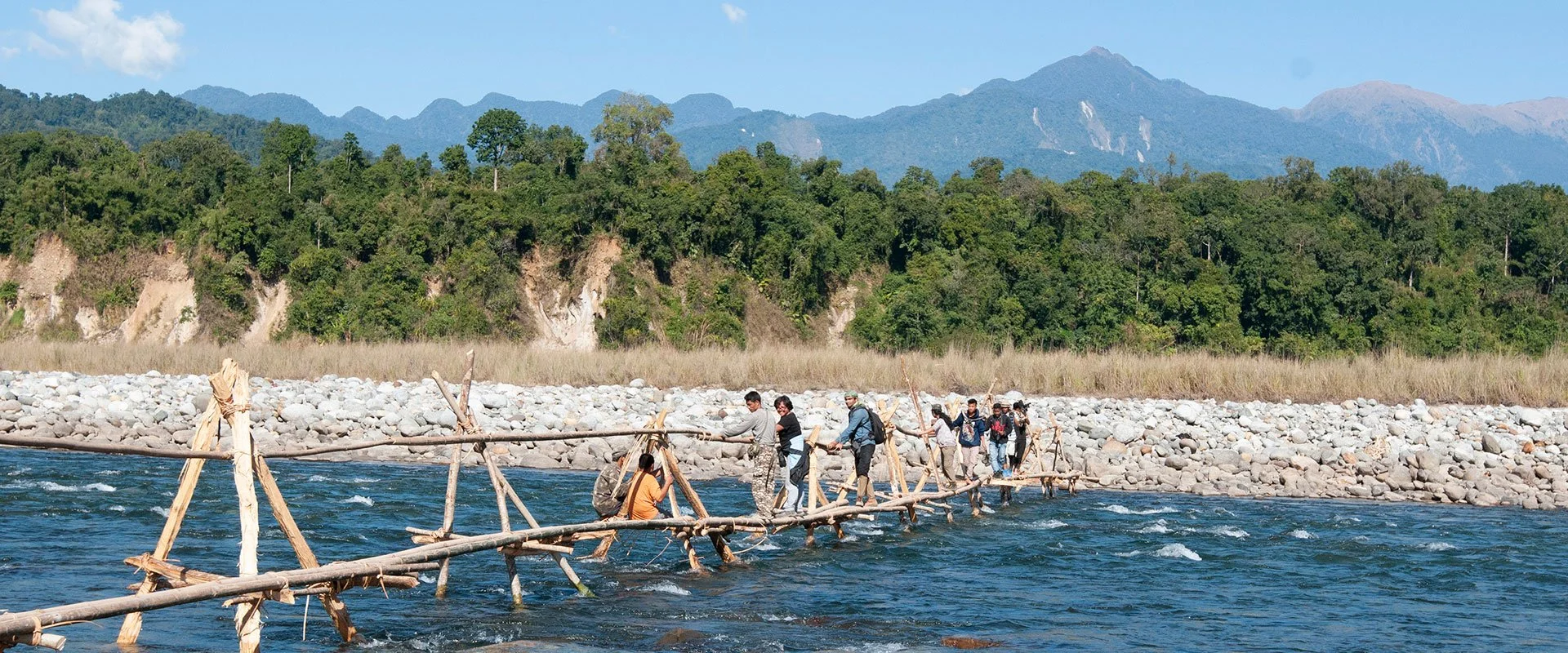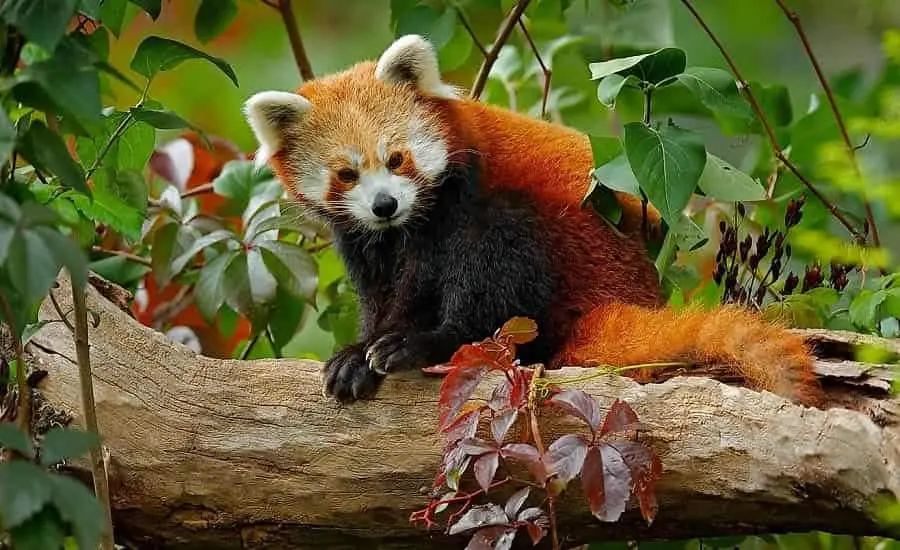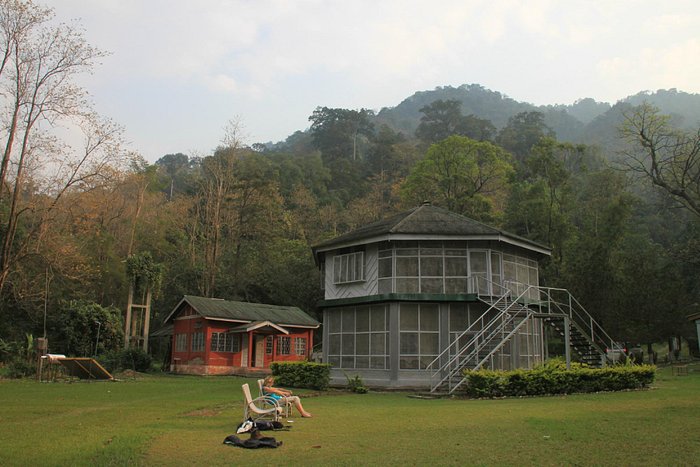Nestled in the easternmost corner of India, amidst the enchanting landscapes of Arunachal Pradesh, lies the breathtaking Namdapha National Park. Spanning over 1,985 square kilometers, this pristine wilderness is a nature lover’s paradise. With its diverse flora and fauna, including several endangered species, Namdapha National Park is a haven for wildlife enthusiasts and adventure seekers alike. Immerse yourself in the dense forests, cascading waterfalls, and meandering rivers as you explore the beauty of this hidden gem.
Trek through untamed trails, encountering elusive tigers, leopards, and clouded leopards along the way. Listen to the goltogel melodious bird calls echoing through the ancient trees, home to over 400 avian species. Catch a glimpse of the majestic hornbills, known for their vibrant plumage and distinctive beaks. As you delve deeper into the wilderness, discover the rich cultural heritage of the indigenous tribes residing in and around the park. Engage in their ancient traditions and marvel at their intricate craftsmanship. Embark on a journey unlike any other, where adventure and serenity intertwine amidst the unspoiled beauty of Namdapha National Park.

Location and Importance of Namdapha National Park
Namdapha National Park, located in the Changlang district of Arunachal Pradesh, is one of the most bio-diverse regions in India. As the largest protected area in the Eastern Himalayan Biodiversity Hotspot, its importance cannot be overstated. The park extends over an area of 1,985 square kilometers, making it the third-largest national park in India.
The park lies between the Dapha bum range and Patkai range, with the river Noa-Dihing flowing through it. With altitudes ranging from 200 meters to 4,575 meters, Namdapha’s diverse topography makes it a unique habitat for a multitude of species. Its location along the international border with Myanmar also adds to its geopolitical importance.
Namdapha National Park is not just a biodiversity hotspot but also plays a crucial role in climate regulation, water purification, and soil conservation. It is a significant part of the local indigenous communities’ lives, providing them with resources and playing a central role in their cultural practices.
Biodiversity in Namdapha National Park
Namdapha National Park is a biodiversity hotspot, teeming with an array of species. The park’s diverse altitudinal range, climate, and different forest types provide an ideal habitat for a rich biodiversity. From subtropical broadleaf forests at lower altitudes to alpine meadows and snow-covered peaks at higher altitudes, the park’s varied landscape is home to a wide range of flora and fauna.
The park boasts over 1,000 plant species, including many medicinal plants. Moreover, it is home to the rare and endangered Pinus merkusii, the only tropical pine tree found in India. This diversity extends to the park’s fauna too, with mammals, birds, reptiles, amphibians, fish, and invertebrates all finding sanctuary within its borders.
Namdapha National Park’s biodiversity is a testament to the richness of nature in this part of the world. It offers a unique opportunity for researchers and nature lovers to study and experience this diversity first-hand. This rich biodiversity also signifies the park’s role as a crucial conservation area.
Flora and Fauna of Namdapha National Park
Namdapha National Park’s flora is diverse and abundant, with over 150 timber species, numerous ornamental plants, and a plethora of medicinal plants. The park is renowned for its bamboo and cane brakes. The towering Dipterocarp trees, an evergreen tropical tree species, are a sight to behold.
The fauna of Namdapha is equally impressive, with a range of mammals, birds, reptiles, and amphibians calling it home. The park is renowned for being the only park in the world to house four big cat species – tigers, leopards, snow leopards, and clouded leopards. Other mammals in the park include the Indian elephant, Indian bison, black bear, and several primate species, including the endangered Hoolock gibbon.
The birdlife in Namdapha is equally spectacular, with over 400 species recorded. These include the Great Hornbill, White-winged Wood Duck, and numerous species of pheasants. Namdapha National Park truly is a paradise for bird watchers and wildlife enthusiasts.

Popular Trekking Trails in Namdapha National Park
Namdapha National Park offers several trekking trails for adventure enthusiasts. The most popular is the 8-day trek from Deban to Firmbase. This trek takes you through lush green forests, across rivers and streams, and offers a chance to witness the park’s diverse fauna.
Another popular trail is the Hornbill trek, named after the majestic bird that can be spotted along the route. This 6-day trek takes you across different terrains, providing stunning views of the park and its wildlife.
For those seeking a truly offbeat experience, the trek from Deban to Embeong is a must-try. This 5-day trek takes you through some of the most remote parts of the park, enabling you to experience the wilderness in its purest form.
Wildlife Conservation Efforts in Namdapha National Park
Namdapha National Park plays a crucial role in wildlife conservation in India. The park’s management has implemented several measures to protect and conserve its diverse fauna. These include anti-poaching squads, regular patrolling, and awareness programs among local communities about the importance of wildlife conservation.
The park also works closely with local communities and NGOs in its conservation efforts. This includes involving local tribes in conservation activities and promoting eco-tourism, which provides alternate livelihood options for these communities.
These efforts have led to a significant increase in the park’s wildlife population. The park is now home to several endangered and vulnerable species, highlighting the success of these conservation efforts.
Accommodation Options in and Around Namdapha National Park
Accommodation options in and around Namdapha National Park range from forest rest houses to homestays and hotels. The forest rest house at Deban offers a rustic experience, with basic amenities and a stunning view of the Noa-Dihing river.
For those looking for a more comfortable stay, there are several hotels in Miao, the nearest town. These hotels offer modern amenities and are a good base for exploring the park.
Homestays are another great option, providing an opportunity to experience the local culture. These homestays, run by local tribes, offer a unique insight into their way of life, their customs, and traditions.
Best Time to Visit Namdapha National Park
The best time to visit Namdapha National Park is between November and March. During these months, the weather is pleasant, making it ideal for trekking and wildlife spotting. The park is closed from May to September due to the monsoons.
Winter, especially November and December, is the best time for bird watching as several migratory birds visit the park during this time. However, it can get quite cold, so it’s essential to pack warm clothes.
While the park is open in April, it can get quite hot, making it less comfortable for trekking. However, this is also the time when many of the park’s flowers are in full bloom, adding a splash of color to the landscape.
Tips for Visiting Namdapha National Park
While visiting Namdapha National Park, it’s important to remember that you are in a wildlife reserve. Respect the park rules, do not litter, and maintain a safe distance from wildlife. It’s also advisable to hire a local guide who knows the park well and can help you spot wildlife.
Ensure to carry essentials like water, snacks, and a first-aid kit while trekking. Dress in layers as the weather can change quickly, and don’t forget to pack a good pair of trekking shoes.
Lastly, remember to carry a camera. The stunning landscapes and diverse wildlife of Namdapha are worth capturing. However, avoid using flash while photographing animals as it can startle them.

Exploring the Wonders of Namdapha National Park
Namdapha National Park is a true gem, offering a unique blend of stunning landscapes, rich biodiversity, and vibrant local cultures. Whether you’re a nature lover, wildlife enthusiast, or adventure seeker, Namdapha has something to offer.
The park’s conservation efforts are commendable, ensuring that this biodiversity hotspot continues to thrive. As you explore Namdapha, you realize the importance of preserving such spaces – not just for the wildlife they protect but also for the essential ecosystem services they provide. If you’ve found joy and inspiration in exploring this hidden gem, consider delving into another intriguing destination by reading our article about North Korea. Discover the mysteries and complexities of this enigmatic nation, and continue your journey of exploration and discovery. Until we meet again on the pages of adventure, may the spirit of exploration guide your path.

